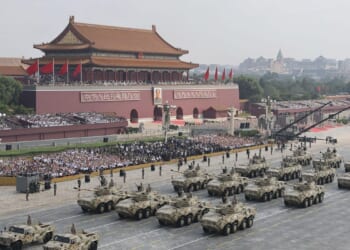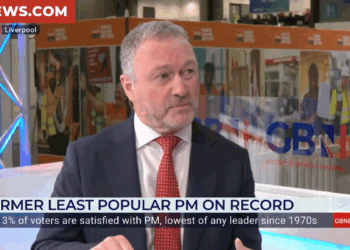2025 has marked a watershed period for semiconductor manufacturing on U.S. soil. From achieving profitability milestones to securing partnerships with tech giants, the world’s largest contract chipmaker advanced its Phoenix operations beyond initial projections while creating thousands of high-wage jobs and fortifying domestic supply chains.
Investment Expansion Reaches Historic Proportions
March brought a major announcement that reshaped the scope of U.S. semiconductor manufacturing. TSMC Arizona revealed plans to invest an additional $100 billion on top of its existing $65 billion commitment, bringing total investment to $165 billion. The expansion includes three additional fabrication plants, two advanced packaging facilities, and a research and development center.
Former Chairman and CEO Dr. C.C. Wei addressed the expansion directly: “AI is reshaping our daily lives, and semiconductor technology is the foundation for new capabilities and applications. With the success of our first fab in Arizona, along with needed government support and strong customer partnerships, we intend to expand our U.S. semiconductor manufacturing investment by an additional $100 billion.”
The commitment represents the largest foreign direct investment in U.S. history and is projected to generate 40,000 construction jobs over four years while creating tens of thousands of permanent high-tech positions. Economic projections estimate the investment will drive more than $200 billion in indirect economic output across Arizona and the broader United States over the next decade.
Production Milestones and Profitability
October saw TSMC Arizona achieve a significant operational benchmark when mass production of AI chips in partnership with Nvidia commenced at the Phoenix facility. Jensen Huang, Nvidia’s CEO, celebrated the milestone at the north Phoenix campus: “For the very first time in American history, in recent American history, the single most important chip is being manufactured here in the United States by the most advanced fab at TSMC here in the United States.”
Financial performance validated the operational progress. The Arizona unit posted its first-ever profit in the first half of 2025, contributing NT$4.52 billion in net income. The turnaround from previous losses stemmed from strong market demand and high factory utilization rates, with the first fab’s 30,000-wafer monthly capacity fully booked by major clients, including Apple, AMD, and Nvidia.
Production yields at the Arizona facility exceeded expectations. Reports indicated that TSMC Arizona’s yield rates for 4-nanometer chips actually surpassed those at Taiwan facilities by approximately four percentage points, a notable achievement for a newly operational plant.
Accelerated Technology Deployment
July earnings calls revealed plans to accelerate advanced technology deployment at the Phoenix campus. Former CEO C.C. Wei announced the company is preparing to “upgrade their technology faster to N2, and more advanced technology to Arizona,” responding to surging demand for AI-related applications.
The second fab, which completed the shell of construction during 2025, will manufacture 3-nanometer chips. Wei indicated the company is close to securing additional land nearby to support ongoing expansion plans, enabling TSMC Arizona to scale up to a gigafab cluster serving customers in smartphones, artificial intelligence, and high-performance computing.
The third fab broke ground in April, with Commerce Secretary Howard Lutnick attending the ceremony. Production at this facility is projected to begin by the end of the decade. This fab will host the company’s most advanced nodes, including 2-nanometer and angstrom-class A16 processes.
Workforce Development Initiatives
November brought expansion of the company’s apprenticeship programs, demonstrating TSMC Arizona’s commitment to building local talent pipelines. Rose Castanares, president of TSMC Arizona, announced the company would recruit and hire nearly 130 new apprentices and trainees in 2025, representing a $5 million investment in workforce development.
The expanded program now includes four technician tracks: equipment technician apprenticeships through Estrella Mountain Community College, process technician apprenticeships via Northern Arizona University and Rio Salado College, manufacturing technician specialist training through Grand Canyon University and Western Maricopa Education Center, and additional facilities technician positions.
Governor Katie Hobbs emphasized the broader impact: “The semiconductor industry has created opportunities for countless Arizonans to gain access to good-paying, stable jobs. Today, we are making that opportunity more accessible by creating new pathways into this growing, high-tech sector through robust new apprenticeship programs.”
The first phase alone is expected to create 6,000 direct positions
Academic and Research Partnerships
ASU’s partnership with TSMC Arizona continues to deepen through multiple channels. ASU provides specialized classes, fellowships, and research opportunities while expanding the talent pipeline through its Corporate Affiliate Program. The collaboration targets juniors, seniors, and graduate students for engineering, manufacturing, business, and infrastructure internships, creating structured pathways into TSMC’s Arizona operations.
Customer Commitments and Industry Impact
Major technology companies publicly affirmed their commitments to sourcing chips from the Arizona facilities throughout 2025. AMD CEO Lisa Su praised the partnership: “TSMC has a long track record of providing the leading-edge manufacturing capabilities that have enabled AMD to focus on what we do best, designing high-performance chips that change the world. We are committed to our partnership with TSMC and look forward to building our most advanced chips in the U.S.”
Qualcomm CEO Cristiano Amon confirmed the company already has chips manufactured in Arizona and plans to utilize expanded capacity: “They have a facility in Arizona. We already have chips built in Arizona. The more capacity that they put in, we’re going to use it.”
Apple positioned itself as the largest customer at TSMC Arizona’s first facility, committing to a multibillion-dollar relationship as part of its broader U.S. investment strategy. The tech giant announced that chips powering future Apple devices would be manufactured at the Phoenix campus, fulfilling the company’s commitment to domestic semiconductor production.
Infrastructure and Sustainability
Throughout 2025, TSMC Arizona advanced plans for an industrial water reclamation plant designed to achieve a 90% water recycling rate. The facility addresses environmental concerns in Arizona’s desert climate while demonstrating the company’s commitment to sustainable manufacturing practices.
Each of the three fabs under construction features cleanroom areas approximately double the size of standard industry logic fabs, accommodating the extensive equipment required for leading-edge production. The fabs are designed to meet TSMC’s global standards for energy efficiency, water conservation, waste management, and air pollution control.
Economic Ecosystem Development
The presence of TSMC Arizona has catalyzed broader semiconductor ecosystem growth throughout the Phoenix metropolitan area. Chris Camacho, president and CEO of the Greater Phoenix Economic Council, reported that since TSMC’s initial announcement, GPEC has located 39 semiconductor-related companies to the region, creating more than 7,700 jobs and over $37 billion in capital investment.
Fourteen of TSMC’s key suppliers have established or announced plans for U.S. facilities to support the Arizona operations, creating a clustering effect that amplifies the economic impact beyond direct employment. These suppliers provide materials, equipment, chemicals, and specialized services necessary for advanced semiconductor manufacturing.
The Greater Phoenix area now hosts more than 75 semiconductor companies, prompting the Semicon West conference to relocate from San Francisco to Phoenix starting in 2025 after 50 years in the Bay Area. The move signals Arizona’s emergence as a recognized hub for semiconductor innovation and manufacturing.
Looking Forward
As 2025 concludes, TSMC Arizona stands positioned at the center of America’s semiconductor manufacturing resurgence. The combination of expanded investment commitments, operational profitability, accelerated technology deployment, comprehensive workforce development, and deep academic partnerships creates a foundation for sustained growth throughout the remainder of the decade.
The progression from groundbreaking to high-volume production to profitability in less than five years demonstrates both the urgency of domestic semiconductor manufacturing and the capability of cross-sector collaboration between government, industry, and academia to achieve strategic objectives. With three additional fabs under development and plans for advanced packaging facilities, the Phoenix campus will continue expanding its role in producing the chips powering artificial intelligence, high-performance computing, and next-generation technologies.
For Arizona’s economy, the transformation extends beyond job creation and capital investment. The concentration of semiconductor manufacturing capacity, research facilities, workforce training programs, and supplier networks positions the state as a critical node in global technology supply chains while reducing dependence on overseas production for chips essential to national security and economic competitiveness.
Members of the editorial and news staff of the Daily Caller were not involved in the creation of this content.

![Scott Bessent Explains The Big Picture Everyone is Missing During the Shutdown [WATCH]](https://www.right2024.com/wp-content/uploads/2025/11/Scott-Bessent-Explains-The-Big-Picture-Everyone-is-Missing-During-350x250.jpg)














